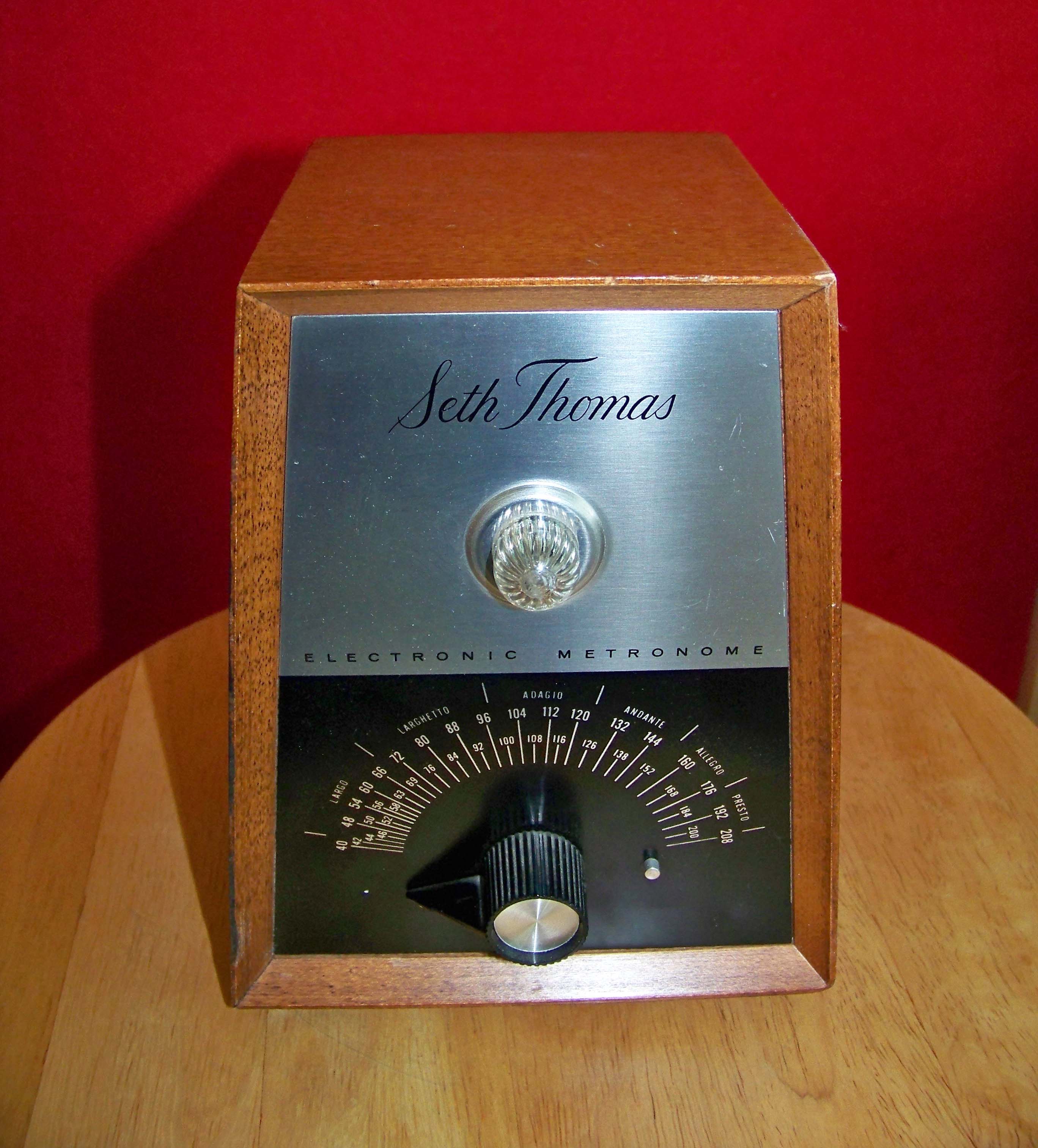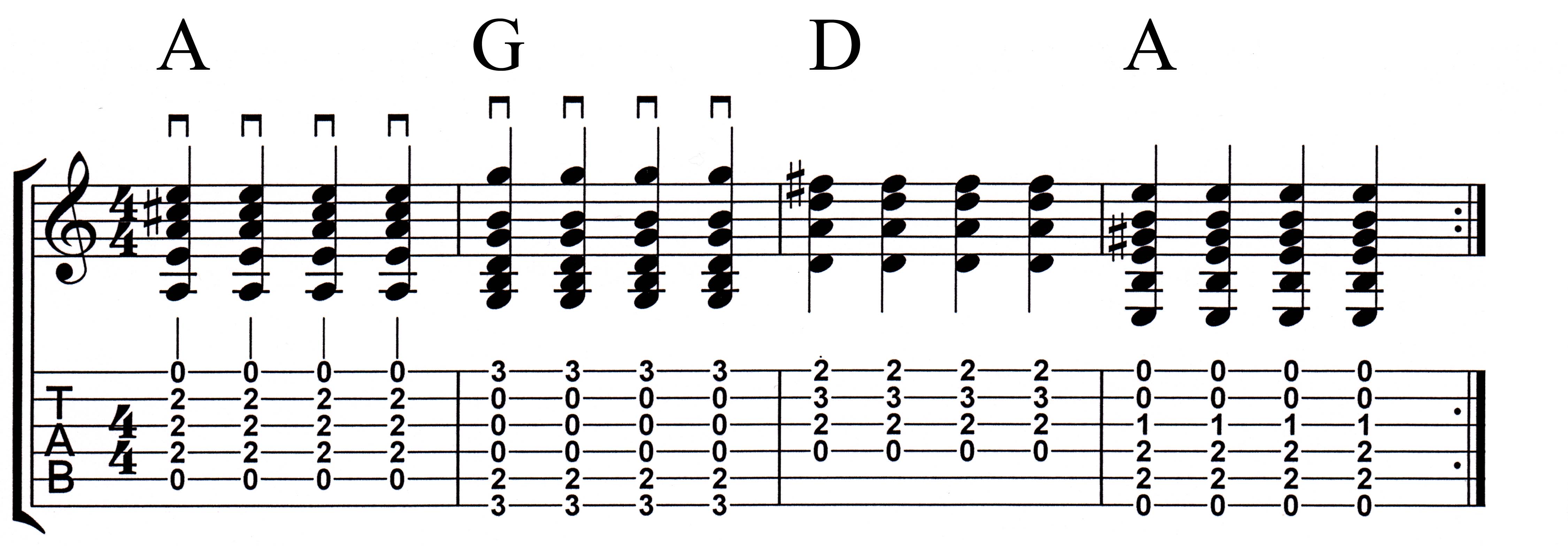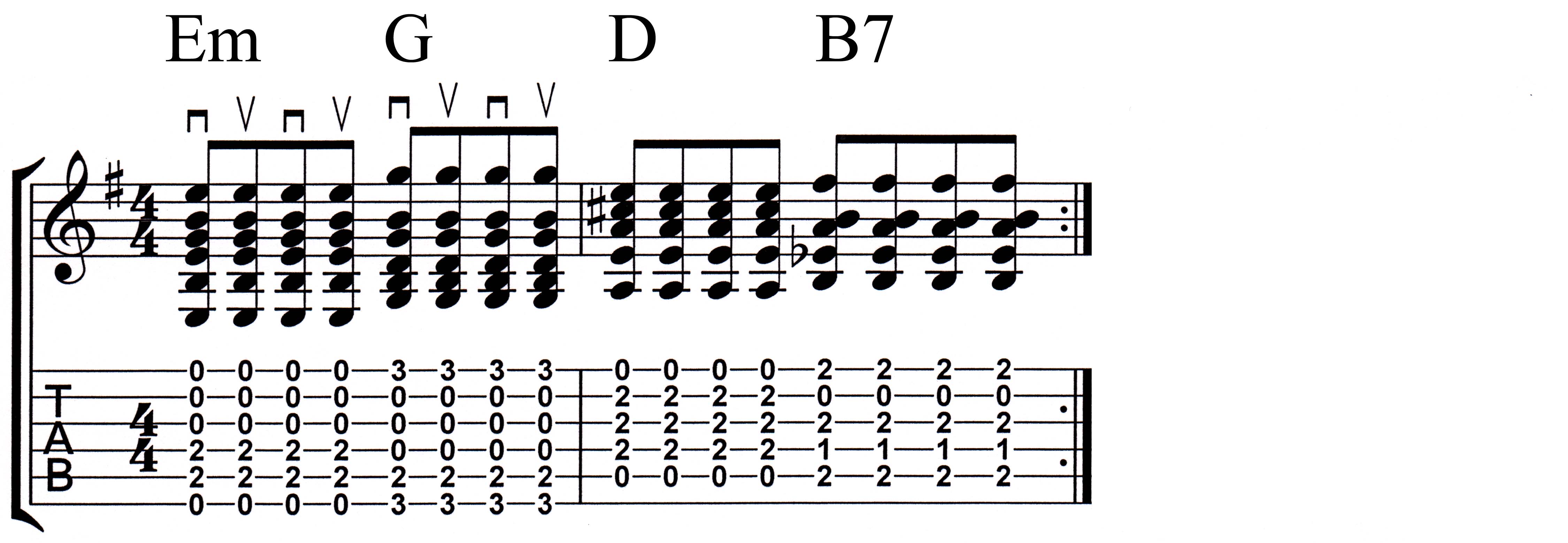
One of the most difficult things to learn to do well is keep good time, to know where the beat is, and how to play with, against, and around the beat, and still keep
a handle on the tempo (or meter) of the song you're playing.
All musicians are expected to be able to play with a steady tempo - no exceptions. When you go to a jam session, or an audition (or are auditioning prospective
musicians), it is assumed everyone understands how to keep time.
One of the most important aspects of your practice time is to learn how to keep a steady, consistent tempo. And a metronome is essential in aiding you to achieve
this ability. You should make it part of your daily routine, during exercises and during song studies.
Just as with anything else you do, there is a learning curve in playing with a metronome. If you've never done so, you will have to learn how to stablize your
sense of time and how to stay focused on both what you are playing, and how it syncopates with the beat - all while staying on tempo. The metronome is the
exact tool you need to help you do this.
I do not recommend a wind up metronome with a pendulum arm that swings back and forth. The reason is simply this: you need a perfectly level surface for them to
work correctly, to maintain a steady beat. So an electro-mechanical metronome is recommended.
I use an old Seth Thomas electric metronome that I found on Ebay for around $25.00 including shipping. It makes a wonderfully obscene noise, and also has a neon
light that pulses with the beat (for drummers). It takes a moment to warm up, too. On the right side is a knob that you can turn to adjust the volume of the beat
"thwak", which also affects the sound, from dull to harsh. Here's a picture of it.

You can also find free metronome apps online; and one student I have found a great app for his iPhone that does amazing things. Personally, I'm a fan of a stand alone metronome because it doesn't tie you to a device, like the computer or phone. My rig is not next to my computer, and I prefer it that way (fewer distractions... hmmm, maybe I should check my e-mail...).
The first thing you need to do is start simple. You want to syncronize your strum to keep on the beat, to play at the same time as the "thwak" of the metronome. So,
using all down strokes, play the following exercise of quarter notes with the metronome set at 60 beats per minute (bpm). That's one "thwak" per beat, per strum.

We are starting slow for a reason. Playing at slower tempos requires more precise placement of notes and strums, and so requires you to have greater accuracy. Playing at fast tempos allows you to be sloppy because there is more "forgiveness" in the precision of note and strum placement - it also encourages bad technique, which is what we're trying to prevent and/or overcome here.
If you've never worked with a metronome, you are going to "drift" off tempo; accept this as a fact and don't get anxious when it happens. When it does happen, simply stop and begin again on the next available "thwak" to get yourself back on track. If your metronome has a high pitch for the "One", the first beat of the measure, you can wait for the next "One" - or, if it allows, disable this feature so all beats are the same pitch or tone. That way you can start on the next available beat and get back on track.
Be patient with yourself, allowing yourself the time it will take to learn to work with a metronome; for some it will be a couple of days, for others more than a week of persistent effort (five to ten minutes a day is recommended). The main point is to play with the metronome. So when you get off track, don't just charge ahead when you're ready or recovered, wait for the next beat! Repeat after me: The metronome is your friend!
Next up, play the following exercise of eighth notes; the down stroke is the beat stroke and the up stroke is the "and" stroke of the beat (and is played between the
beats. Remember this simple rule: the beat will always be on the down stroke of any strum pattern.

Okay, now, in order to help you refine the placement of the up stroke part of this strum, set your metronome to 120 bpm. You're still playing at 60 bpm, but by doubling the speed of the metronome, you will be able to know the precise placement of the up stroke in your strum - essential for that smooth execution of most songs (apart from the shuffle or swing feel songs). Play the same exercise above with the "thwak" now sounding on both down and up strokes. If 120 bpm is too fast, slow down and try 100 bpm (50 bpm). The point is to create a smooth and even down and up stroke rhythm.
Even if you have worked with a metronome before, you still need to "reset" or "calibrate" your time sense. It does drift, trust me. I use a metronome still, and I've been playing music for fifty years now, since I was 8 years old. You can't rely upon a drummer to be your metronome. They drift, too. And most professional or "professional minded" drummers will work with a metronome because they want to be sure they can confidently and consistently keep good tempo. But it isn't solely the job of the drummer to keep time - it is every player's responsibility to keep good time. You can't always blame the drummer!
True story: I had just come off a studio date playing drums (I'm multi-instrumental), working with a click track, when I got hired as the sound tech for a gig in Venice Beach, California. Before the guests were scheduled to arrive, an impromptu jam started up. I asked the drummer if I could sit in on the kit. After twenty minutes of a very cool jam, I went back to the console to prepare for the show. A woman came up to me and offered me a job with her band on the spot - because my time sense was so well defined - all because I had just been working with a metronome/click track for the past month in the studio (and my playing chops were well defined, relevant and clean to the jams being played).
Okay, back to the present. Now, reset the metronome to 100 bpm. The following exercise is with sixteenth notes, and two strum strokes per "thwak", sounding on the
eighth notes (the beat and the '&' of the beat). Now, you could also drive the metronome up to 200 bpm to "thwak" on every strum stroke, but that doesn't actually help
like you think. Besides, you're already measuring each down and up stroke with the eighth note exercise. If this next exercise is a bit difficult to execute
consistently, slow the metronome down to 90 bpm - whatever is required to help you learn to place your strum strokes precisely where they belong.

Now understand the following: for 16th note patterns, guitar players generally play all down stroke to create a more aggressive attack in the rhythm. But that is not always something that benefits the rhythmic potential of a given tune (particularly on acoustic guitar). Sometimes you want a quick "did - el - e - dum" pick up strum into the next measure, usually a push into a new section of the song. You can only do this with alternating strokes to make it sound right. Listen to Pete Townshend early on in the magnum opus "Tommy", when he does some pretty tricky sixteenths in the rhythmic passages between vocal sections. It requires a supple wrist, relaxed and loose, to pull these off well - and in time!
You can use these same ideas with the metronome for other rhythmic patterns, like swing and shuffle beats, triplets, 3 over 2 passages, all kinds of stuff. It's a veritable cornucopia of possibilities that the metronome can be used for.
Very important technique facts:
Every exercise should be done at the slow speed first. Then, the challenge is to raise the tempo only 4 bpm at a time until you are confidently playing each exercise correctly before moving up another 4 bpm. Why 4bpm? The answer is simple. It is better for you to learn to play well and carry good technique forward as you work through exercises, regardless of type or function. If you speed up too quickly, your technique will suffer horribly. It's tempting to jump ahead to a faster tempo and work things out, but resist that temptation. You will be glad for the fact that you are nailing good practice habits and good technique without sacrificing anything. Afterall, why practice something if you're not going to learn it right the first time?
This should give you a brief idea of how you can employ the metronome beyond merely time keeping chores. It becomes a far more useful tool when you use it to help you nail down good rhythm practices. And it can be used beyond what is described here. And, remember: The metronome is your friend!
Okay, now shut off your computer and go play with some ideas.
See you next time.